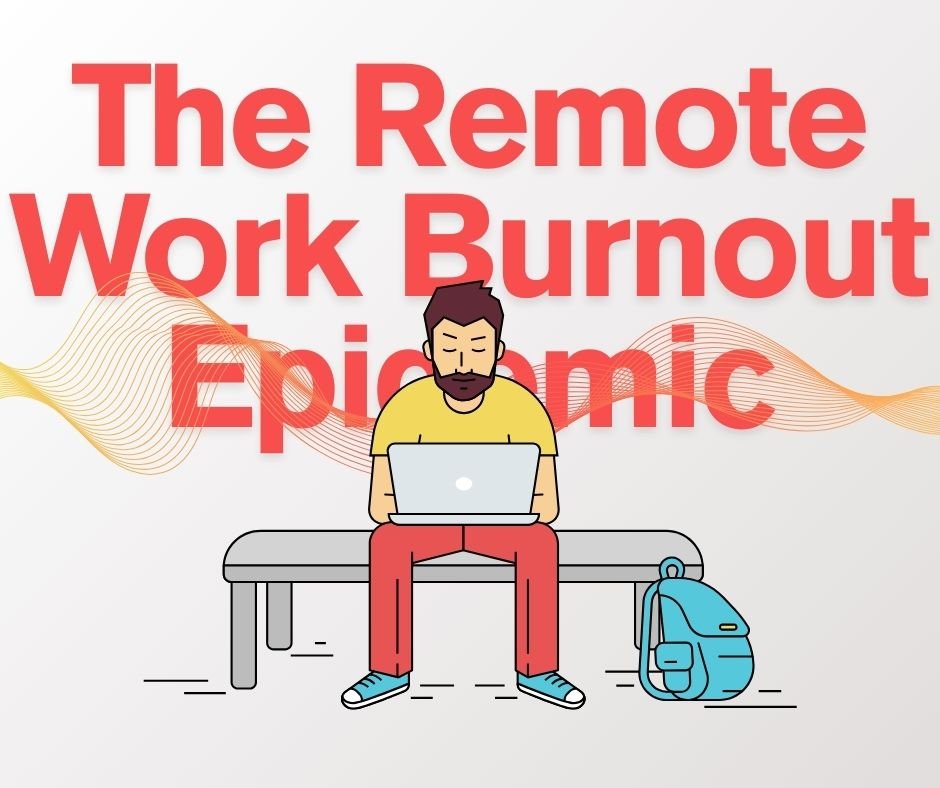The shift to remote work was supposed to liberate us from grueling commutes and rigid office hours. Yet, three years into this revolution, a troubling trend has emerged: remote workers are burning out faster than ever before.
A 2024 study by the World Health Organization reveals that 42% of remote employees now experience chronic workplace fatigue—a 17% increase from pre-pandemic levels. Even more alarming? 67% of these workers don’t realize they’re burned out until it’s too late.
Why Remote Work Burnout is Different (and More Dangerous)
Office burnout had clear boundaries—you left it at the office. Remote burnout follows you everywhere:
- The Always-On Trap
- 58% of remote workers check messages after 8 PM (Slack, 2024)
- 63% eat lunch at their desks regularly (Toggl Track)
- The average workday has expanded by 2.1 hours since going remote (Stanford)
- Digital Presenteeism
Employees now feel pressured to:
- Keep Slack status lights green
- Respond instantly to emails
- Attend unnecessary video calls “just to be seen”
- The Isolation Factor
Unlike office environments where colleagues might notice someone struggling, remote workers often suffer silently until breaking point.
The 5 Hidden Burnout Symptoms Every Remote Worker Should Know
Burnout isn’t just about being tired. Watch for these subtle warning signs:
- Sunday Night Dread
That pit-in-your-stomach feeling about Monday morning that starts earlier each week. - Task Paralysis
Staring at a simple to-do for 30+ minutes, unable to start despite no technical obstacles. - Emotional Numbness
Not caring about projects that used to excite you or coworkers you used to enjoy. - Physical Manifestations
- Unexplained headaches
- Digestive issues
- Muscle tension (especially jaw/neck)
- Cognitive Decline
- More typos than usual
- Forgetting simple processes
- Difficulty following conversations

How Top Companies Are Fighting Remote Burnout
Progressive organizations are implementing radical solutions:
1. The “Right to Disconnect” Policy
Companies like HubSpot now:
- Ban messages after 6 PM
- Auto-delete emails sent during vacations
- Pay employees $500/year to take real lunch breaks
2. Results-Only Work Environments (ROWE)
Pioneered by Dell and GitLab:
- No set hours
- No activity monitoring
- 100% focus on output
3. Mandated “Focus Fridays”
At Asana:
- No meetings after 12 PM Fridays
- No expectation of responses
- Protected time for deep work
Your Personal Burnout Recovery Plan
If you’re already feeling the effects, try this 30-day reset:
Week 1: Digital Boundaries
- Turn off all non-essential notifications
- Set an “end of workday” alarm
- Create a physical shutdown ritual (e.g., closing laptop, going for a walk)
Week 2: Time Reclamation
- Audit your calendar—cancel 3 recurring meetings
- Batch similar tasks (e.g., do all emails at once)
- Schedule focus blocks in your calendar like important meetings
Week 3: Energy Management
- Track your natural energy peaks (most people have 2-3 daily)
- Schedule demanding work during peaks
- Save admin tasks for lower-energy periods
Week 4: Connection Revival
- Set up 2 virtual coffee chats with colleagues
- Join a professional community outside your company
- Plan one in-person coworking day (even at a local café)
Essential Tools for Sustainable Remote Work
- Time Guardians
- Clockwise (automatically protects focus time)
- Toggl Track (identifies time sinks)
- Communication Filters
- SaneBox (prioritizes important emails)
- Slack Digest (batches non-urgent messages)
- Wellbeing Monitors
- Spoke (flags concerning language in messages)
- Headspace for Work (guided meditation breaks)

The Future of Healthy Remote Work
Forward-thinking companies are redefining success metrics:
- Productivity → Impact
- Availability → Results
- Hours Worked → Problems Solved
“Burnout isn’t personal failure—it’s a design flaw in how we work,” says Dr. Christina Maslach, creator of the Maslach Burnout Inventory. “The solution isn’t resilience training, it’s rebuilding work structures that don’t constantly drain energy.”
Key Takeaways
- Remote burnout is more pervasive and harder to detect than office burnout
- The signs often manifest physically and emotionally before affecting work quality
- Both companies and individuals need systemic solutions, not just coping mechanisms
- Sustainable remote work requires respecting natural human limits
- The healthiest remote teams measure output, not activity
The remote work revolution won’t fail because of technology limitations—it’ll fail if we don’t solve the human sustainability equation. By recognizing burnout’s early signs and implementing protective structures, we can create remote work environments that are both productive and humane.
After all, what good is location flexibility if we lose our health and happiness in the process? The most successful remote workers and companies of the future won’t be those who work the longest hours, but those who work the smartest—with wellbeing as the foundation, not an afterthought.

